
Photo: EFdeN house
By Mihai Toader-Pasti and Claudiu Butacu, co-founders energiaTa and EFdeN
EFdeN is one of Europe’s most sustainable houses. It is situated in Bucharest, the capital of Romania. The house has been developed by a passionate team of students, who participated in the third European edition of the Solar Decathlon competition, which took place in 2014 in Versailles, France.
Why is it sustainable? It is good for the environment, for its occupants and it is financially accessible and profitable. It is a 100% electric solar house, which produces more energy than it consumes; it is comfortable and safe, using the most environmentally and user friendly materials. For example: no PVC was used in this sustainable house.
The Solar Decathlon competition for solar houses
A total of 20 teams from 16 countries and 4 continents competed for the title of the best house in Europe, in 10 categories, ranging from Architecture to Construction, Energy Efficiency, Energy Balance, Comfort Conditions, Innovation and Sustainability. All the houses have been designed and built by teams from all over the world, and then transported to Versailles and assembled in just 10 days. Remember, we are talking about full size houses, fully functional and using only electricity.
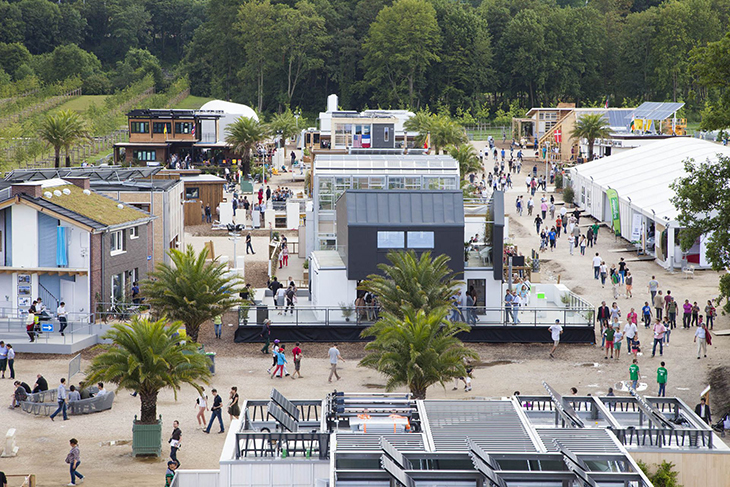
Photo 1: The Solar Decathlon competition in Versailles, France
The Romanian team is now qualified and will compete in the first edition of Solar Decathlon Middle East which will take place in Dubai, UAE in 2018, where they will have to build another solar house.
Why are houses and buildings important?
In Europe, buildings are responsible for 36-40% of the carbon-dioxide (CO2) emissions and energy consumption. Therefore, if we can tackle the problem of pollution in buildings, we could solve one of the most pressing problems worldwide.
Moreover, as we are spending almost 80% of our time inside buildings – including sleep, work, shopping and other activities – the ‘health’ of the buildings is strongly influencing people’s health.
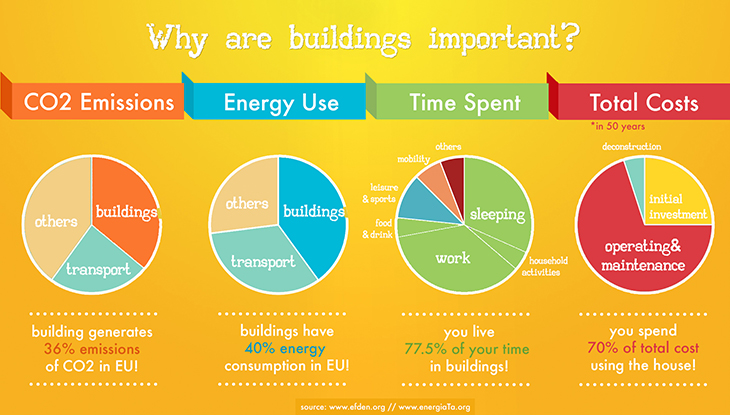
Photo 2: Importance of buildings in relation to CO2 emission, energy use, time spent and total cost
The total cost is one thing we tend to forget. When we are talking about the price of a house, the buying price makes just 20% of the total cost. The next 75% of the price are the bills and maintenance people will have to pay during the time they live in the house, while the last 5% of the price is paid for demolition. Having a larger initial investment is a good decision, because you will pay less over the time, without paying bills for heating, cooling, and lighting. Basically you will only have to pay for the cable TV, phone and internet connection. This is how the young researchers succeeded in creating the EFdeN house.
What about existing buildings?
During the course of the last several months, the members of the Romanian Green Building Council have traveled over 4,000 km, organizing 10 public consultation sessions in the cities of Cluj, Iași, Galați, Brașov, Craiova, Timișoara and Bucharest. We have met and discussed with over 400 people of different ages, social and professionals categories in order to co-create and support Romania’s National Renovation Strategy. The goal of this consultation was to facilitate the dialogue and create a sense of responsibility of interested parties in order to transform the existent buildings, both public and private, to be more energy efficient and sustainable. Romania’s National Renovation Strategy, requested by the EU, will take these recommendations into consideration, becoming a partner of the Romanian Environmental Ministry in this effort.
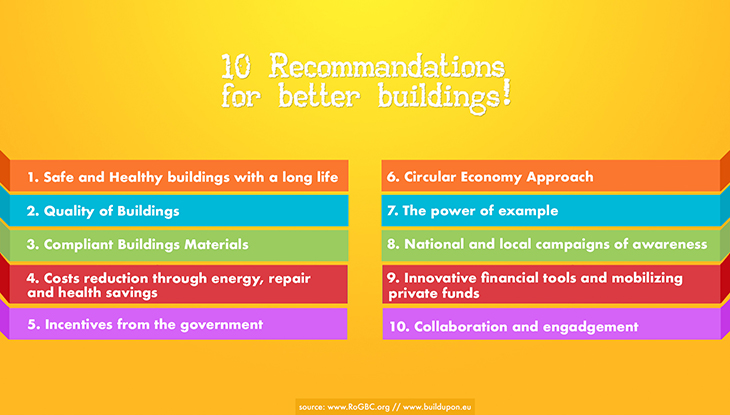
Photo 3: Ten recommendations for better buildings by RoGBC, BuildUpon Project
Sustainable Transport
Electric transportation may be the solution to the other half of the problem. Transportation in Europe contributes with 24% of the total CO2 emissions and with 33% of the energy consumption. The transition to hybrid and electric cars has to be a priority. In Romania, for example, the government is offering grants of up to EUR 6,500 for the buyers of electric cars. In recent years, the electric charging infrastructure in Romania has evolved quite a lot, with charging stations being available at the shopping centres, gas stations, car dealerships and even public institutions.
The renewables mix in Romania is one the biggest in Europe

Photo 4: Romania energy mix and projections for 2030
Romania has a total energy capacity of 21.1 gigawatt (GW): hydroelectric energy makes 31%, wind – 14%, solar – 6%, and biomass – 1%. Altogether renewables make 52% of Romanian energy mix. There is a plan for Romania to reach a level of 68% of renewables in energy mix by 2030, due to the new technocratic government strategy for energy.
Status of prosumers in Romania
There are around 50 people in Romania who are producing energy at the moment and not even 10 of them are injecting energy back into the grid, and they are very unhappy. This is due to all the challenges that one who wants to become a prosumer (that is both a producer and a consumer) – has to face, but the number of Romanians who want to become prosumers is growing rapidly.
The biggest obstacle for the country to have more prosumers is the lack of the smart grids since the infrastructure is rather old. For example if house owners want to install photovoltaic cells (PVs) on house, they need to get the authorisation to do so. The permitting process often takes over 450 days: a total of 14 permits from 10 different institutions are needed. Furthermore, at the moment, there is no legislative solution to inject the electricity into the grid.

Photo 5: 450-day long permitting process
EnergiaTa is the leading organisation in Romania promoting the necessity of prosumers to be officially recognised by the law. For the first time in history the Ministry of Energy introduced the category of prosumers into the National Energy Strategy thanks to Mrs. Corina Popescu, the Ministry’s State Secretary, and Mr. Radu Dudău, responsible for the National Energy Strategy.
Three ways to compensate prosumers
There are three ways to help create prosumers, according to experiences around the world.
The first is through the use of the green certificates. This solution has been used in Romania until recently. The Green Certificate is a document which attests the fact that 1 megawatt-hour (MWh) of renewable energy was produced. The companies responsible for polluting are obliged by law to purchase the Green Certificates. Basically, after you get a Green Certificate for producing green energy, you have to search for a company willing to buy it; more work to be done by the prosumers. The price of a green certificate is set by law, having a minimal value of EUR 30 and a maximum of EUR 60. A Green Certificate is valued at EUR 30 since December 2015. Such low prices cannot cover the expenses associated with the production of green energy by small prosumers.
The second method is with a feed-in-tariff, for the production less than 500 KW of power. Basically, the producer is paid for the amount of energy they are injecting into the grid. Even though this has never been fully functional in Romania, the people interested in this solution have to either do this via a company or to become an individual company, to pay taxes, to get an accountant, a lot of work that no one wanted to get into. The government is now working with the Romania’s National Authority and the Ministry of Finance to overcome this challenge.
The third method is by receiving compensation on the bill, and this is what energiaTa.org aims to promote at the governmental level. Given how much one household consume and how much they produce, a calculation is made to set the proper compensation. Even though the calculation behind this is far more complex, we have to find a way to promote prosumers in order to make the transition to green economy around Europe and the Balkans.
If you want to visit the solar house or find out more about the status of prosumers in Romania, you can contact the young people behind EFdeN and energiaTa at mihai.toader@efden.org.














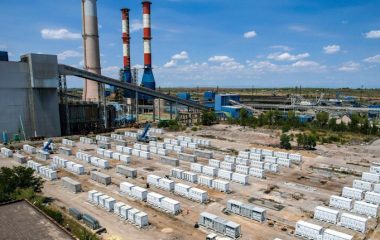


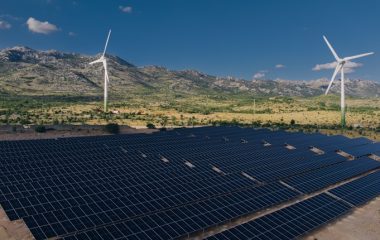
Be the first one to comment on this article.